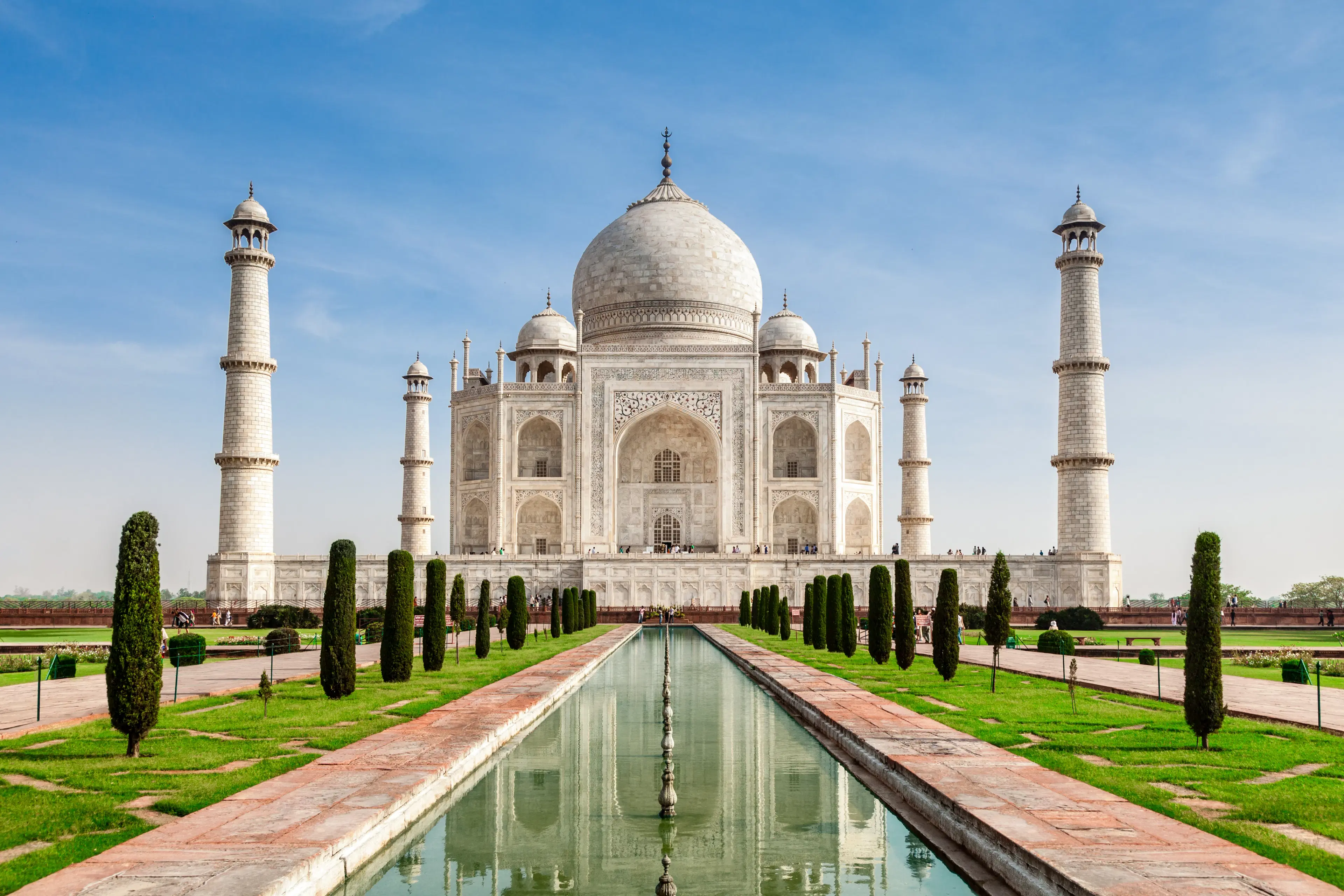
Hotels
•04 min read

Agra is a magical blend of history, love, and cultural splendor. Revered worldwide as the home of the iconic Taj Mahal, the city boasts an enviable portfolio of architectural marvels and historical narratives that continue to captivate travelers. This comprehensive guide will lead you through the must visit places in Agra, revealing expert insights into its top attractions, famous landmarks, and hidden gems that have shaped its legacy over the centuries.
The Taj Mahal is not merely a monument; it is an enduring symbol of eternal love. Its pristine marble structure reflects the passion of its creator and the memory of Mumtaz Mahal. Early risers can capture the soft morning hues, while sunset provides a dramatic backdrop ideal for captivating photographs. Entry fees and guidelines are straightforward, making it accessible for all travelers eager to witness this world-renowned marvel.
Just a stone's throw from the Taj Mahal, Agra Fort stands as a testament to Mughal ingenuity and power. This architectural wonder houses treasures like the intricately designed Jahangir Mahal and the regal Diwan-i-Khas. Wandering through its expansive courtyards and lush gardens, visitors experience the essence of Agra's rich history firsthand.
Fatehpur Sikri introduces a fascinating chapter of Agra's historical saga. Once the thriving capital of the Mughal Empire, this abandoned city is celebrated for its monumental Buland Darwaza and the exquisite Jama Masjid. Its ruins whisper tales of grandeur and serve as a poignant reminder of the impermanence of human endeavors, making it an essential destination for history enthusiasts.
Often referred to as the Baby Taj, Itimad-ud-Daulah’s Tomb is celebrated as a precursor to the Taj Mahal. With its delicate marble work and intricate inlay designs, this tomb is a masterpiece in its own right. Despite being slightly overshadowed by its more famous neighbor, its understated beauty makes it a must visit spot for those in search of historical depth.
For travelers seeking tranquility, Mehtab Bagh offers a serene garden experience with a breathtaking view of the Taj Mahal. This garden is ideally visited at sunset when the cool evening breezes and the fading light create a magical atmosphere. The interplay of shadows and light on the Taj's facade is nothing short of poetic.

Akbar’s Tomb in Sikandra is an architectural synthesis of Mughal and Hindu artistic styles. Nestled amidst peaceful surroundings, this monument honors one of India’s greatest emperors. Its harmonious design and verdant surroundings speak of a legacy that is both culturally and historically significant.
Agra is a treasure trove for those looking to take a piece of its legacy home. Bustling markets like Sadar Bazaar and Kinari Bazaar offer a delightful array of marble artifacts, intricate leather goods, and, of course, the famed Petha – a delectable local sweet. These shopping avenues are perfect for immersing oneself in the city’s rich artisan traditions.
Beyond its monuments and markets, Agra offers a host of unique experiences. Witnessing a live performance of the Kalakriti Dance Drama Show introduces visitors to the artistic soul of the city. Alternatively, a visit to Wildlife SOS provides an unexpected yet enriching encounter with local conservation efforts. These experiences create a deeper, more personal connection with the local culture.
A trip to Agra is not complete without indulging in its culinary delights. The city is famed for its Mughlai cuisine, offering sumptuous dishes that tell as much of a story as its monuments do. From street food vendors dishing out spicy treats to quaint eateries serving beloved local favorites, Agra’s food scene promises a taste adventure that complements its cultural heritage.
To fully enjoy Agra’s splendor, timing is key. The cool, dry months offer pleasant weather, and early mornings are perfect for sightseeing, especially at the Taj Mahal. Avoiding the peak tourist season not only ensures milder weather but also allows for a more intimate experience with the city’s landmarks.
If your schedule is tight, consider planning an itinerary that balances the iconic landmarks with hidden gems. In one day, you can cover the Taj Mahal, Agra Fort, and Itimad-ud-Daulah’s Tomb. For a two-day trip, incorporate Fatehpur Sikri and Mehtab Bagh to savor both history and natural beauty without feeling rushed.

Navigating Agra is relatively easy thanks to a well-connected local transport system. Options include auto-rickshaws, cycle-rickshaws, or even guided tours that offer insightful narratives about each site. For those keen on extending their journey, nearby destinations like Mathura and Vrindavan add another dimension to your historical exploration.
Insight Corner – "Did You Know?"
The Taj Mahal changes its hues throughout the day – from a soft pink in the morning, dazzling white at noon, to a golden hue under the moonlight. This phenomenon symbolizes the changing moods of Mumtaz Mahal, for whom this masterpiece was built.
Taj Mahal, Agra Fort, Fatehpur Sikri, Itimad-ud-Daulah’s Tomb, and Mehtab Bagh.
Yes, with a well-planned itinerary, you can cover the Taj Mahal, Agra Fort, and Itimad-ud-Daulah’s Tomb in one day.
Attend the Kalakriti Dance Drama Show, visit Wildlife SOS, and explore the local markets for souvenirs.
Early morning is the best time to visit the Taj Mahal to avoid crowds and witness its beauty during sunrise.
Yes, attractions like the Taj Mahal, Agra Fort, and Dolphin Water Park are great for families.
Agra is a city that encapsulates the rich tapestry of India's heritage. From architectural masterpieces like the Taj Mahal and Agra Fort to hidden gems such as Itimad-ud-Daulah’s Tomb and Mehtab Bagh, every corner of the city offers a piece of history waiting to be explored. With practical tips on planning your visit and a taste of its unique cultural and culinary scene, this guide aims to inspire your next journey. Embrace the allure of Agra and discover why it remains one of the most cherished travel destinations in India.